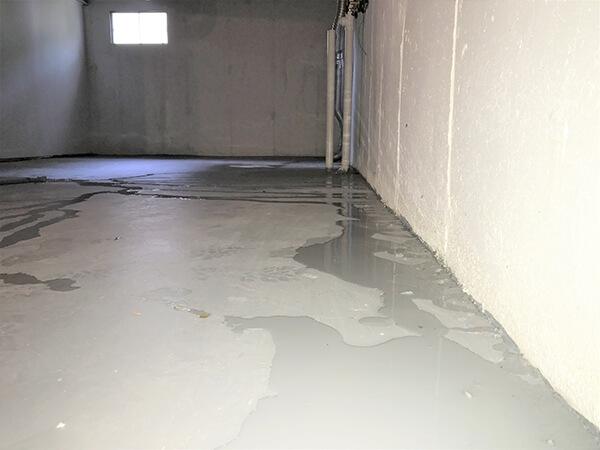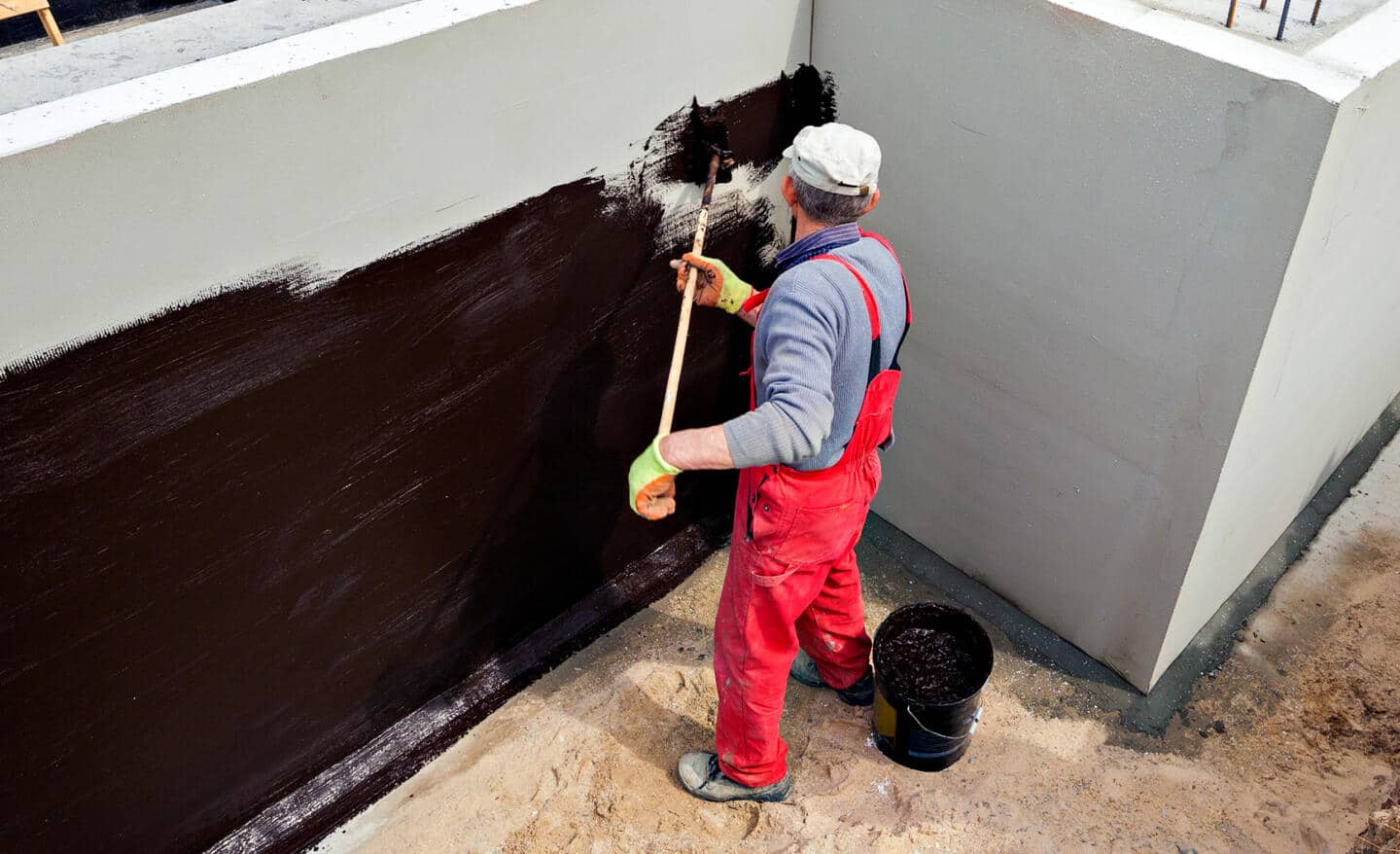Discovering the Different Techniques of Basement Waterproofing and Their Benefits
Cellar waterproofing is necessary for preserving a stable and dry environment. Numerous approaches exist, each with distinct benefits. Inside sealants shield against wetness breach, while exterior systems address drainage problems. Sump pumps and French drains pipes take care of water efficiently, and dehumidifiers manage humidity degrees. Comprehending these choices can help house owners make informed choices. The ideal remedy typically depends on specific situations and requirements. What aspects should one take into consideration when selecting the most effective strategy?
Inside Sealants: An Effective Barrier Against Moisture
Inside sealers act as a crucial line of protection versus dampness breach in cellars. These items are designed to produce a waterproof barrier on wall surfaces and floorings, efficiently protecting against water from permeating in. Available in different kinds, consisting of paints, sealers, and finishings, they can load fractures and pores in concrete, guaranteeing a more safe environment.The application procedure generally entails cleaning the surface areas to eliminate dust and debris, followed by the cautious application of the sealer. As soon as treated, these items enhance the longevity of the cellar while lowering moisture levels, which can lead to mold and mildew growth and structural damage.Moreover, indoor sealants are frequently simple to apply and can be an economical service for property owners looking to alleviate dampness concerns. By giving a dependable layer of protection, they play a vital function in safeguarding the cellar room, preserving both its integrity and functionality.
Exterior Waterproofing Solutions: Safeguarding Your Foundation
Outside waterproofing systems use a durable solution when property owners seek to safeguard their foundations from water damage. These systems commonly involve applying waterproof membrane layers and water drainage systems to the outside walls of a basement. By creating a barrier against groundwater, they properly avoid wetness from penetrating the foundation (Basement Waterproofing).One noteworthy advantage of exterior waterproofing is its ability to address the resource of water invasion before it gets to the interior. This aggressive method not just safeguards architectural integrity but likewise boosts the durability of the home.Moreover, exterior systems can improve the general drain around the foundation, lowering hydrostatic pressure. This reduces the opportunity of cracks and heaving that can arise from water buildup. Consequently, property owners can enjoy a dry, secure basement environment, considerably enhancing home worth and convenience. Ultimately, outside waterproofing systems are an important financial investment in preserving a healthy and balanced home structure
Sump Pumps: Taking Care Of Water Build-up Efficiently
Sump pumps play a crucial role in taking care of water buildup in cellars, giving an effective option for homes susceptible to flooding or excess dampness. These devices are installed in sump pits, commonly situated at the least expensive factor of a basement, where they gather water that seeps in from the surrounding dirt. When the water degree rises, the sump pump activates, effectively pumping out the excess water to a marked drain area, consequently protecting against possible damage to the structure and indoor spaces.There are 2 primary kinds of sump pumps: completely submersible and stand. Completely submersible pumps are set up underwater, making them less visible and typically quieter, while stand pumps are located over the sump pit and are simpler to preserve. By properly taking care of water accumulation, sump pumps not just safeguard versus structural damages yet also add to a much healthier living setting by decreasing humidity levels and protecting against mold and mildew development.
French Drainpipes: Redirecting Water Far From Your Home

Dehumidifiers: Decreasing Moisture Levels for a Drier Atmosphere
Cellar waterproofing entails numerous methods, and dehumidifiers play a substantial function in keeping a dry environment. By properly minimizing humidity levels, dehumidifiers assist protect against moisture accumulation, which can bring about mold growth, architectural damages, and undesirable odors. These tools work by extracting excess moisture from the air, developing a healthier and extra comfortable space.In addition to enhancing air quality, dehumidifiers can enhance the efficiency of various other waterproofing approaches, such as securing and drain systems. They assist preserve perfect moisture degrees, usually between 30% and 50%, which is essential for avoiding condensation on wall surfaces and floors.Moreover, modern-day dehumidifiers are energy-efficient and featured functions like programmable setups and automatic shut-off, making them user-friendly. In general, including a dehumidifier into basement waterproofing prepares gives a vital layer of protection versus moisture-related issues, consequently safeguarding the home's honesty.
Often Asked Inquiries

For How Long Do Waterproofing Solutions Usually Last?
Waterproofing services generally last in between 5 to two decades, depending on the method made use of, quality of materials, and environmental conditions. Normal maintenance and evaluations can aid expand their performance and general lifespan.
Can I Water Resistant My Basement Myself?
The individual thought about whether to water-proof the basement independently. They found that while do it yourself alternatives exist, expertise of methods and materials is vital to guarantee effectiveness, and professional support may provide better long-lasting results.
What Are the Signs of Basement Moisture Issues?
Signs of cellar wetness issues consist of noticeable water discolorations on walls, moldy smells, peeling paint, mold and mildew development, and wetness on floorings. High next moisture levels might also indicate underlying wetness issues needing focus to stop additional damage.
Just How Much Does Basement Waterproofing Expense?
The cost of cellar waterproofing differs extensively, normally ranging from $1,500 to $5,000. Factors affecting expenditures consist of the extent of wetness problems, the selected technique, and the geographical place of the building.
Will Waterproofing Increase My Home's Worth?
The concern of whether waterproofing boosts a home's worth frequently emerges among property owners. Typically, effective waterproofing can improve property allure, alleviate damage risks, and possibly lead to greater resale prices, relying on the local real estate market. By developing a barrier against groundwater, they effectively stop wetness from permeating the foundation.One noteworthy benefit of outside waterproofing is its ability to deal pop over to this site with the resource of water breach prior to it reaches the interior. Sump pumps play a crucial duty in handling water accumulation in cellars, providing an efficient option for homes susceptible to flooding or excess moisture. When the water level climbs, the sump pump activates, effectively pumping out the excess water to an assigned drain area, thereby avoiding possible damages to the foundation and interior spaces.There are 2 major types of sump pumps: completely submersible and stand. Exterior Drainage Solutions. By routing groundwater and surface area water away from the foundation, French drains pipes aid stop water accumulation in cellars and crawl rooms, lowering the risk of structural damages and mold growth.Installation generally occurs around the boundary of the home, making sure that water is successfully diverted. Indicators of cellar wetness concerns include noticeable water stains on walls, stuffy smells, peeling paint, mold growth, and moisture on floorings